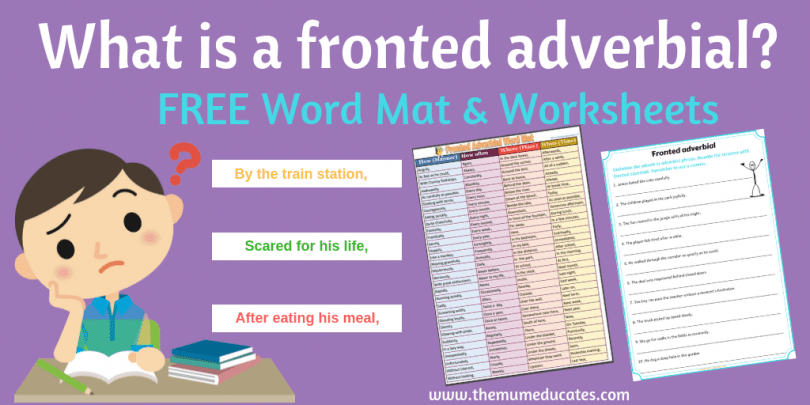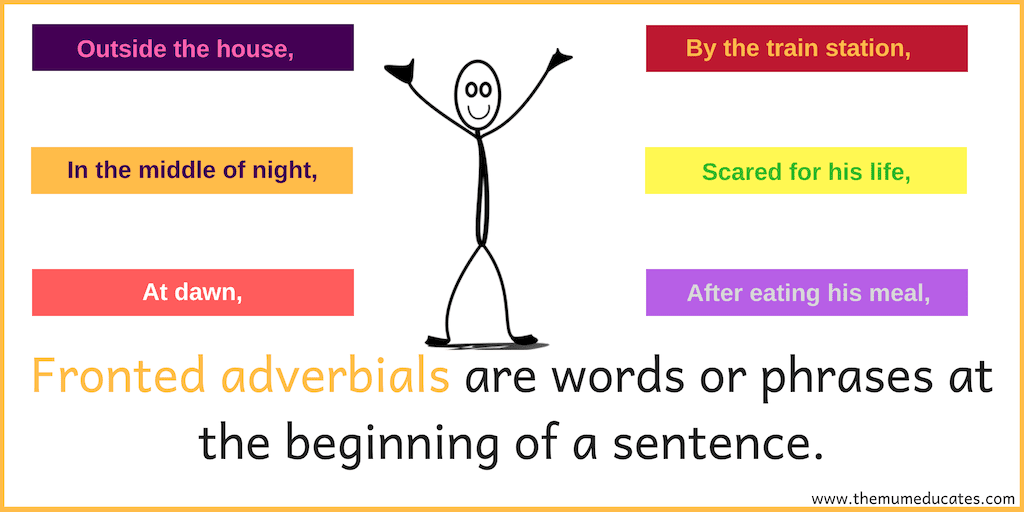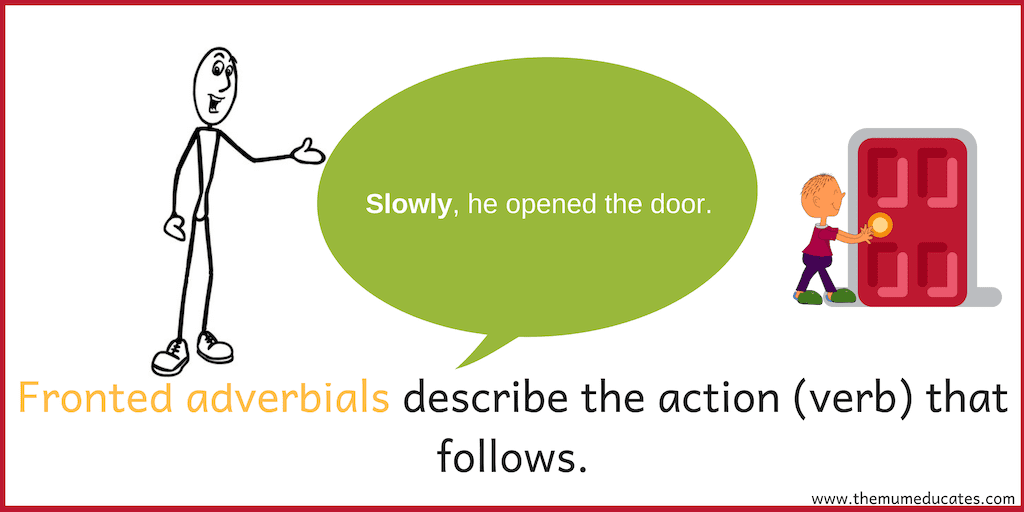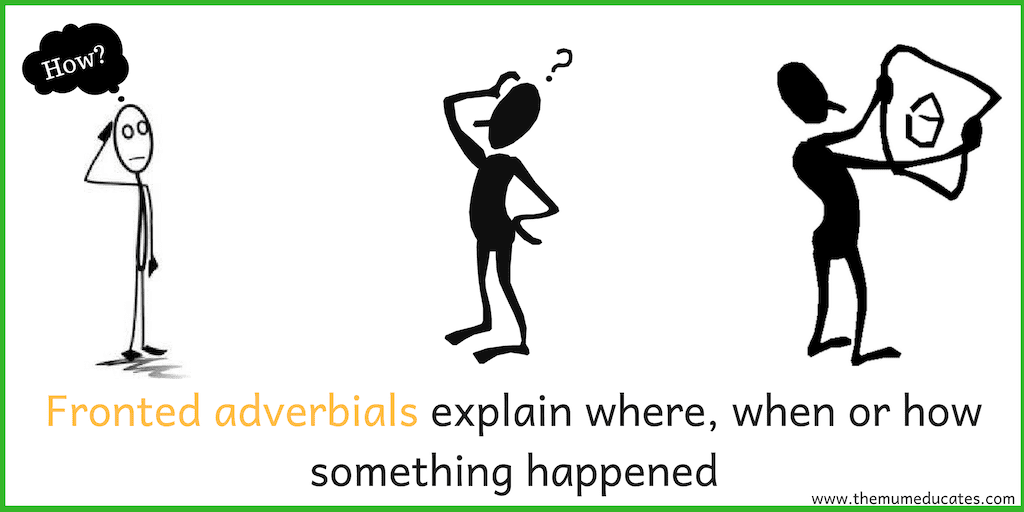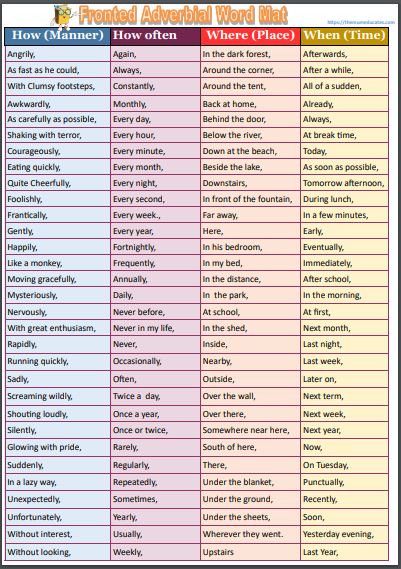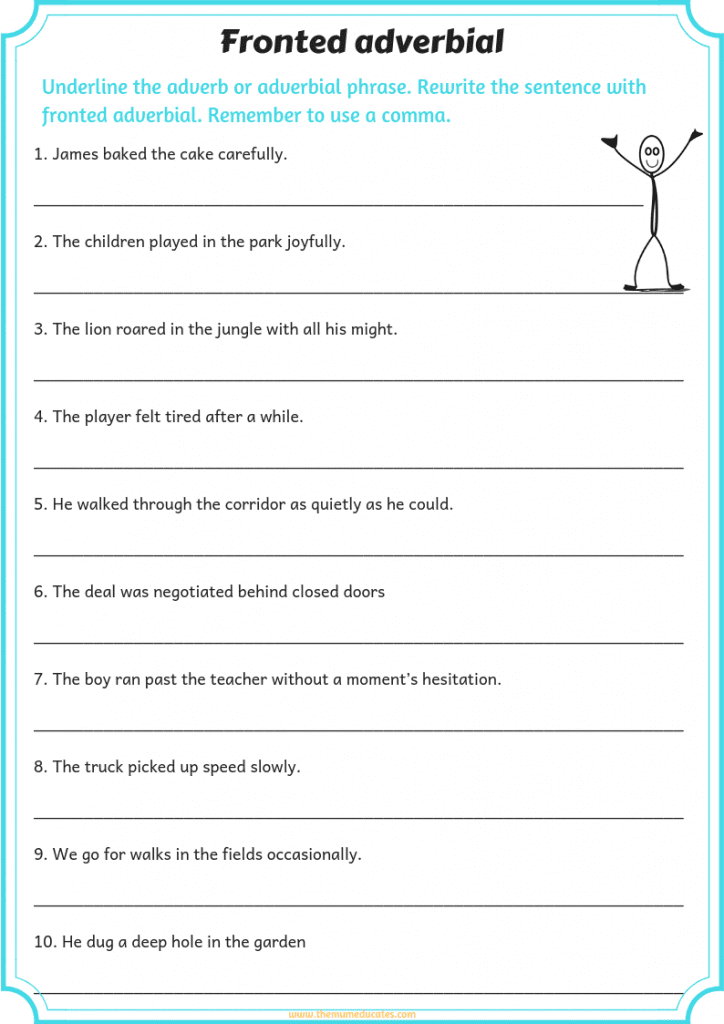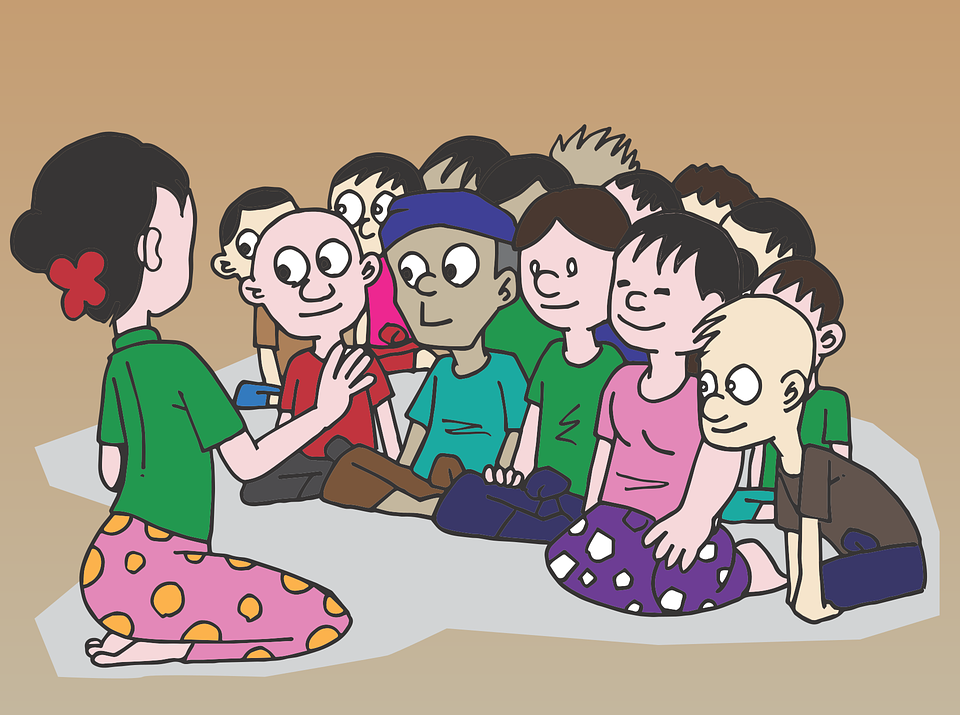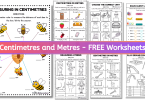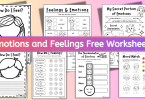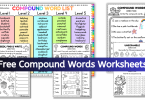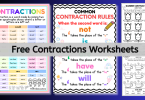A fronted adverbial is a great way to up-level your child’s writing. Our engaging and colourful worksheets plus word mat have been designed to make the learning easy and interesting for all children.
What is an adverbial?
An adverbial is a word, phrase or clause which adds more detail or information to a verb e.g the time, place, or manner of which describe the action in the rest of the sentence.
Example:
- He drove to the hospital as quickly as he can.
- The children jumped happily.
- I met my friend in Paris.
- My daughter finished her work at half-past six.
Fronted adverbial definition:
A fronted adverbial is an adverbial phrase or a word that’s moved to the beginning of the sentence, before the verb. They are usually separated from the rest of a sentence with a comma.
So an adverbial phrase is an adverb, followed by a comma, followed by the main clause.
The fronted adverbial describes the action that follows. For example:
“The child opened the door” is an action. The fronted adverbial is “slowly”. So the action is going to be done slowly.
These adverbials help the child to improve their writing style. In order to make a complex sentence, the child can use coordinating conjunctions
Fronted adverbials examples.
Occasionally, my mum allows me to have a sleepover at my friend’s house. (frequency)
In the distance, he could hear a scream. (Where)
Carefully, Ben read the recipe. (How)
In the garden, there was a baby hedgehog under the leaves. (Where)
As soon as he could, He left the exam hall. (When)
How to teach fronted adverbials in a fun way?
Word Mat
A great resource for KS2 children to keep on hand as a prompt and spelling reference during independent writing tasks.
Our wonderful fronted adverbial word mat will make it easy for your child. Firstly, ask your child to write a few simple sentences like:
- She ran to the school.
- Ben ate ice cream.
- Tom finished his homework.
Now ask your child if they can improve these sentences using the given fronted adverbials word mat. Try to do the same thing over an over again to make them learn better.
Spot an adverbial phrase or adverbs
Please also have a look at our free prefix and suffix mats, which can help the child to get better in spellings.
In the fronted adverbials worksheet, read the sentence and spot the adverb or adverbial phrase. Move them at the start of the sentence to make the fronted adverbial sentences. Remember your child to add a comma after the fronted adverbial phrase or word.
Make sentences with fronted adverbials.
Show the pictures below to the children and ask them to write a fronted adverbial sentence for each picture. An example sentence has been provided under each picture.
Example:
Slowly, the bird soared across the sky.
Example:
At midnight, the fairies danced above the glistening sky.
Example:
Attentively, the children listened to the story.
Example:
Slowly, the children crossed the road.
If you are interested in some creative writing story starters for children, please have a look at 21 Creative writing story starters for children
For more wonderful books and resources visit our store.

